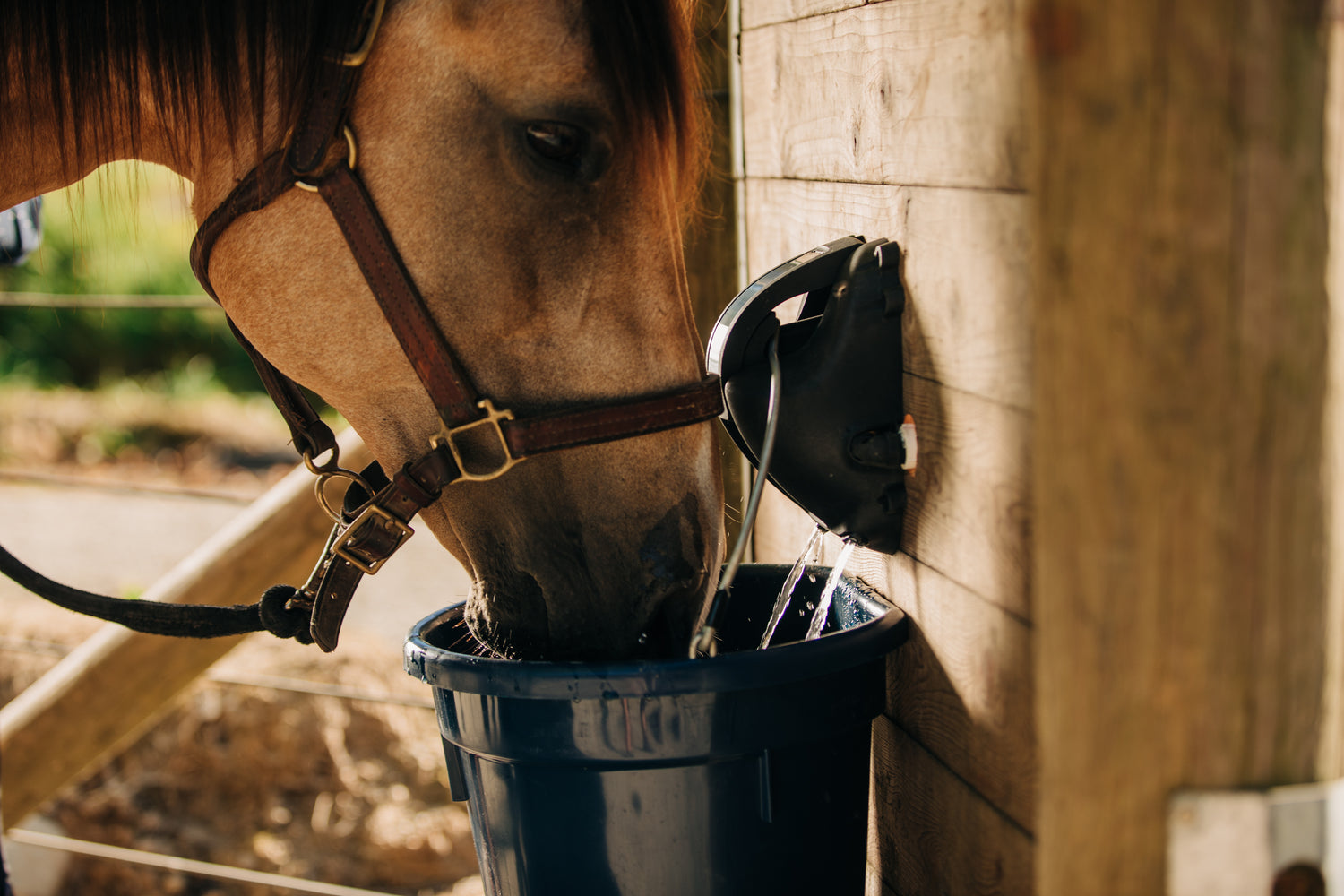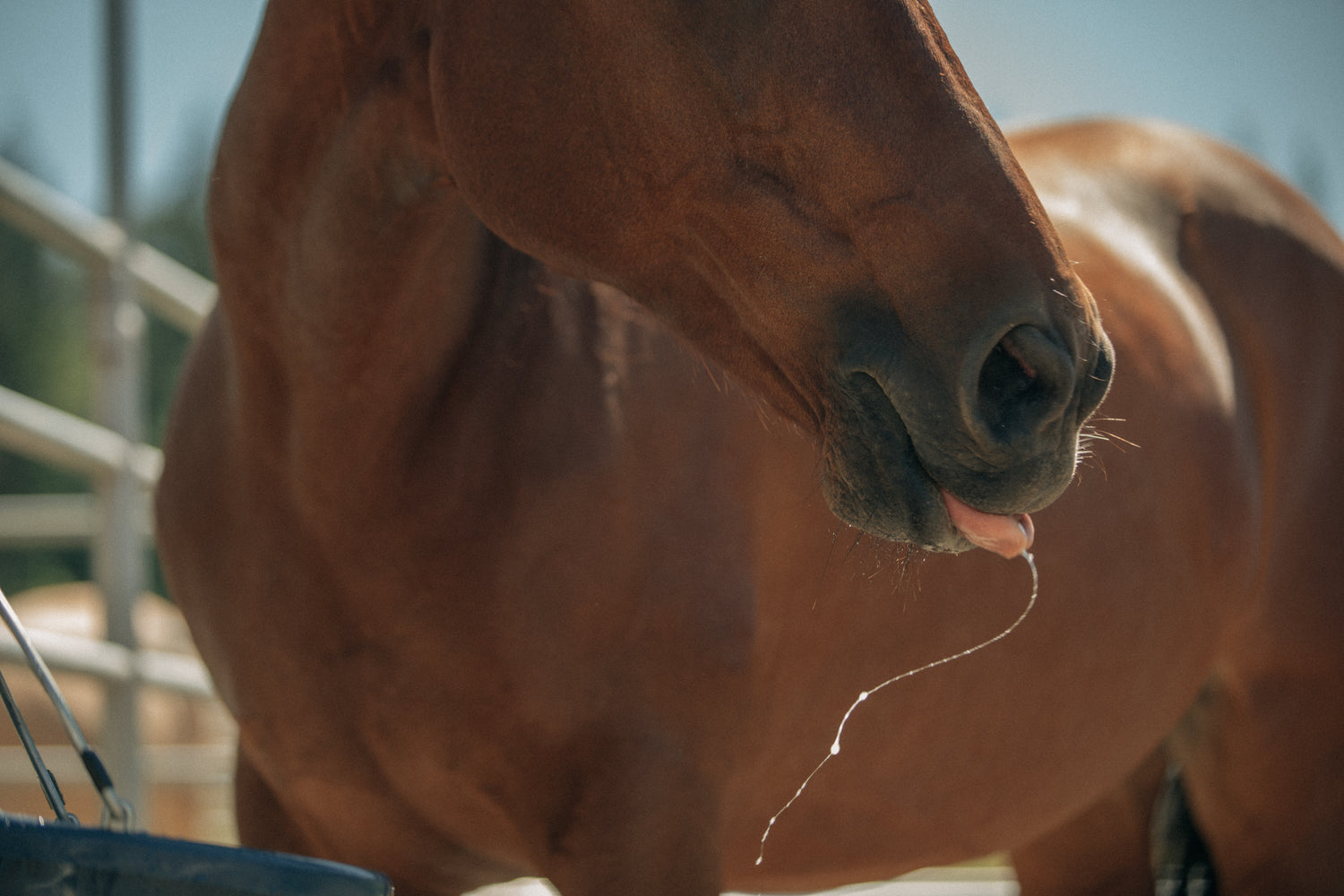
Proper hydration is not just a necessity for equine health, it’s a vital component that directly influences the health and productivity of your horse. Automatic horse waterers provide clean, fresh, accessible water and relieve you of the burden of keeping your horse’s water vessel filled.
Automatic waterers range from general livestock waterers to species-specific solutions. Additionally, automatic waterers come in a variety of delivery systems and materials – from plastic float valves to drinking posts to push paddles – and now sensor technology.
Let’s delve into the various automatic horse waterer parts and types and why Cascada’s innovative horse waterer technology is reimagining equine hydration.
Understanding Automatic Waterers
Automatic waterers are designed to provide a consistent supply of fresh water to livestock without manual intervention.
They come in various types, each tailored to cater to the specific needs of different animals. For instance, general livestock waterers can be used for a range of animals, such as cattle, sheep, and goats.
Automatic horse waterers, on the other hand, are specifically designed with features that accommodate horses' unique drinking habits and safety concerns.
There are 3 main types of automatic horse waterers:
- Float valve, or weight balance, waterers
- Drinking post waterers
- Contactless sensor waterers
Each of these automatic horse waterers ranges in parts, functionality, and durability.
Using “Toilet Technology” for Automatic Waterers
Many automatic waterers have relied on float valve systems. It functions just like the valve in your toilet tank and is often referred to as “toilet technology.”
These systems use a floating device that rises with the water level and shuts off the valve when the water reaches a certain height. While an automatic float valve waterer is straightforward, it is not without its problems when used with livestock or horses.
Float valve materials are prone to mechanical wear and tear.
The constant movement of the plastic valve float parts can lead to the eventual breakdown of the components, increasing the risk of breakage. Pieces of the broken float can contaminate the water and pose a choking hazard to horses and other animals.
Float valve waterers require a lot of different parts.
Float valve automatic waterers are made up of various parts that spend most of their time immersed in water. All those plastic components will break down from usage, long-term water exposure, or both. Eventually, new automatic horse waterer replacement parts will have to be installed.
Float valves can create a breeding ground for bacteria and algae.
The constant exposure of the automatic horse water’s float valve and other parts to water can create a breeding ground for bacteria and algae, compromising the freshness and cleanliness of the water. Additionally, there may be periods when the water sits in the trough for an extended period and becomes stagnant.
Float valve systems are hard to clean.
The various parts of the float system, often located in hard-to-reach areas, make thorough cleaning difficult. This further exacerbates bacterial growth and contamination.
Float valve waterers require a separate meter to track water consumption.
Most float valve automatic waterers do not come equipped with a metered system to track your horse’s daily hydration. A separate meter will need to be installed and requires manual monitoring and resetting daily.
These issues raise questions about the appropriateness of using toilet valve technology for providing drinking water to animals and the need to improve upon the traditional float valve mechanism in automatic watering systems.

The Challenges of Drinking Post Systems
Drinking posts are another type of automatic waterer that provides an insulated underground source of water, keeping it cool in summer and preventing freezing in winter.
Most models feature a small water bowl with a lever your horse pushes to fill the bowl with water. When your horse finishes drinking, the water drains out of the basin. However, the installation and operation of these systems are not without their challenges.
Embedding drinking posts into the ground is difficult.
It involves excavation, plumbing to an underground water source, and often a degree of trial and error to prevent issues such as freezing in colder climates. Additionally, the location for installation needs to be carefully considered, taking into account proximity to a water source and ease of access for the animals.
Maintaining drinking posts can be difficult on large farms.
Automatic drinking posts do not move. So when it’s time to perform regular maintenance or cleaning, it can be difficult to accomplish when there are numerous units spread out over a farm. Some models require the unit to be opened for cleaning, making it cumbersome and time-consuming.
Horses have to learn a new way to drink water.
The very design that keeps the water from freezing requires horses to learn a new behavior—to press down on a paddle for water. This may not come naturally to all horses, potentially leading to frustration or dehydration if not monitored carefully.
Drinking post waterers require a separate meter to track water consumption.
Drinking posts typically do not have built-in mechanisms to track how much a horse drinks. To track water intake, you would need to manually measure how much water is consumed or install a water meter.
While drinking posts offer a unique solution to providing fresh water to livestock and horses, these challenges highlight the need for a more user-friendly and efficient system. A solution that combines the benefits of traditional automatic waterers and drinking posts, but without the drawbacks.

Cascada’s Innovative Approach to Automatic Horse Waterers
Cascada is proud to introduce a game-changing solution in the field of equine care – our innovative automatic horse waterer.
Unlike traditional float valve systems or drinking posts, Cascada's waterers utilize a ground-breaking technology that ensures a consistent supply of fresh, clean water for your horses.
Cascada uses durable materials with no moving parts.
Cascada’s design is simple. We use ultrasonic sensors for water level detection, ensuring the unit does not clog, stick, flood, or crack.
Plus, we use no floats, levers, or moving parts in our water delivery. Fewer components mean fewer parts that break, need replacement, or end up in your horse’s water.
We select durable materials engineered for longevity and resilience, from heavy-duty molded plastic to stainless steel chew plates. Our commitment to quality extends to every valve, seal, and structural element, ensuring that each waterer is a durable asset in equine care.
Cascada uses a horse-friendly water bucket and design.
Casada doesn’t require your horse to learn a new behavior to drink water.
Instead, we use a traditional 5-gallon water bucket that horses love. Research shows that 5 gallons is just enough water to allow a horse to take deep, uninterrupted drinks.
Additionally, we designed Cascada with a smooth, rounded surface to ensure your horse's safety during every use.
Cascada uses contactless sensors to detect water levels.
We built our waterers with responsive sensors that detect when water levels deplete, triggering a water refill without the stagnation or overflow associated with other waterers.
This innovation ensures that every gulp is as fresh as the first, maintaining the highest standards of hygiene and taste.
Additionally, Cascada refills the water only after the horse has finished to prevent your horse from being startled away from drinking.
Cascada tracks water consumption automatically.
Cascada offers the unique feature of tracking a horse's water consumption through our app . You no longer need to install a separate water meter or deal with the burden of manual tracking.
Our sensor technology monitors water levels every minute and sends individualized data to the app on each waterer installed in your barn. The app learns your horse’s drinking behaviors by tracking their daily hydration levels and alerts you when those levels change.
Cascada is easy to install and clean.
We’ve designed each step of using Cascada to be as simple and easy as possible.
The installation process is straightforward, requiring a connection to a water line, a low-voltage connection hardwired into your barn using an included power supply, and securing the waterer to the wall.
Additionally, cleaning your Casada could not be easier. Just unhook the water bucket, clean and replace it. There are no parts to be cleaned or hard-to-reach nooks that trap debris and algae, contaminating your horse’s water.
Plus, our app can keep buckets half-full on cleaning days to make changing buckets easier.

Horse Hydration is Evolving
In the landscape of equine care, Cascada is innovating automatic horse waterers by building a system no longer reliant on float valves or other moveable parts. Our system provides horses with a consistent supply of clean water while offering owners a seamless, low-maintenance solution.
With an eye on the future, Cascada reimagines equine hydration, merging tradition with technology to ensure that your horse's health and your peace of mind are always in perfect harmony.





